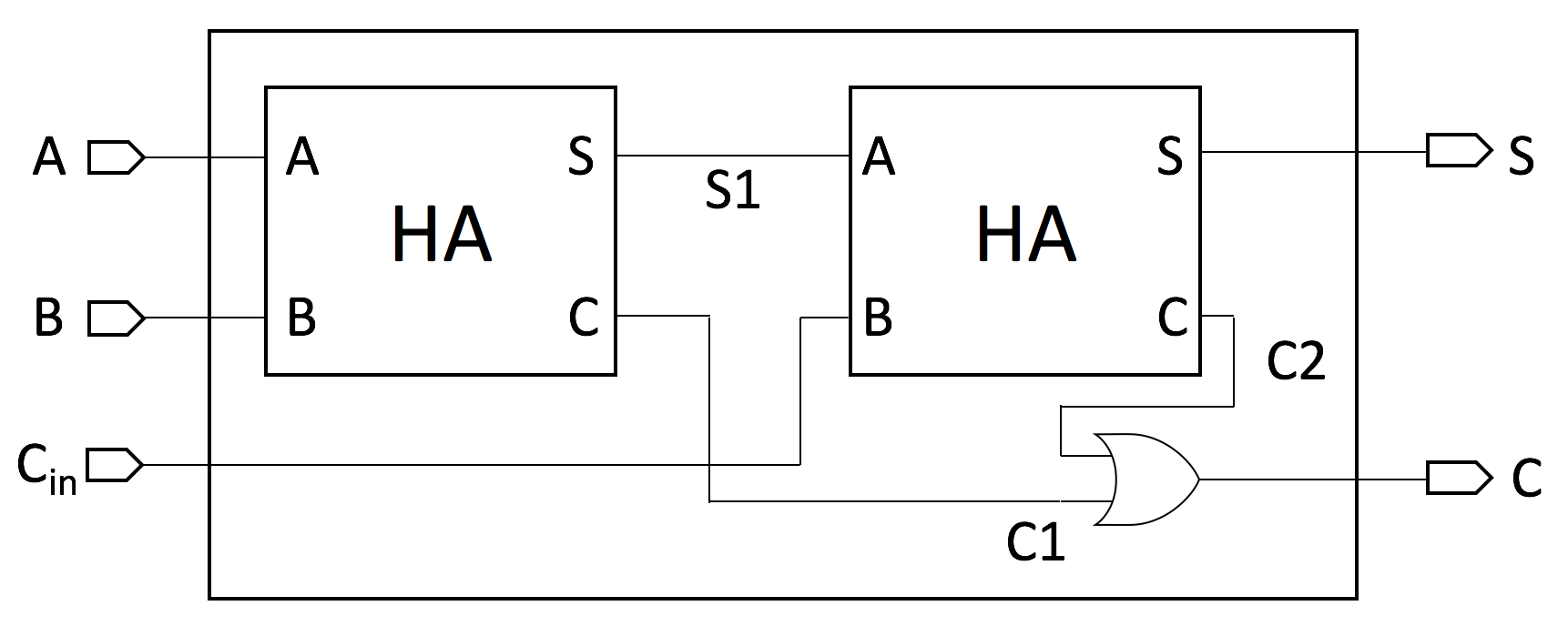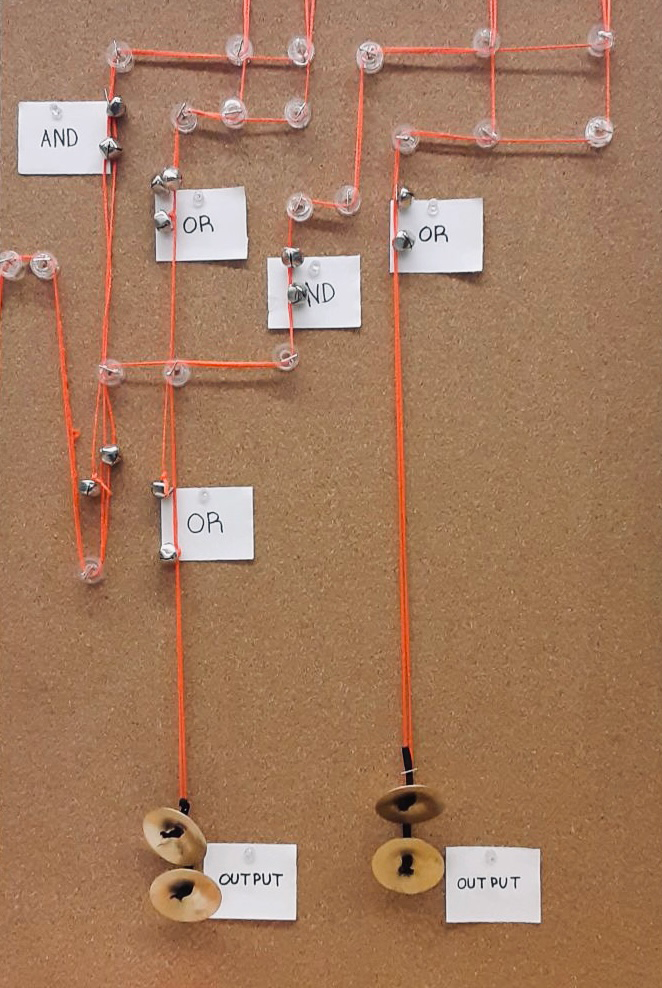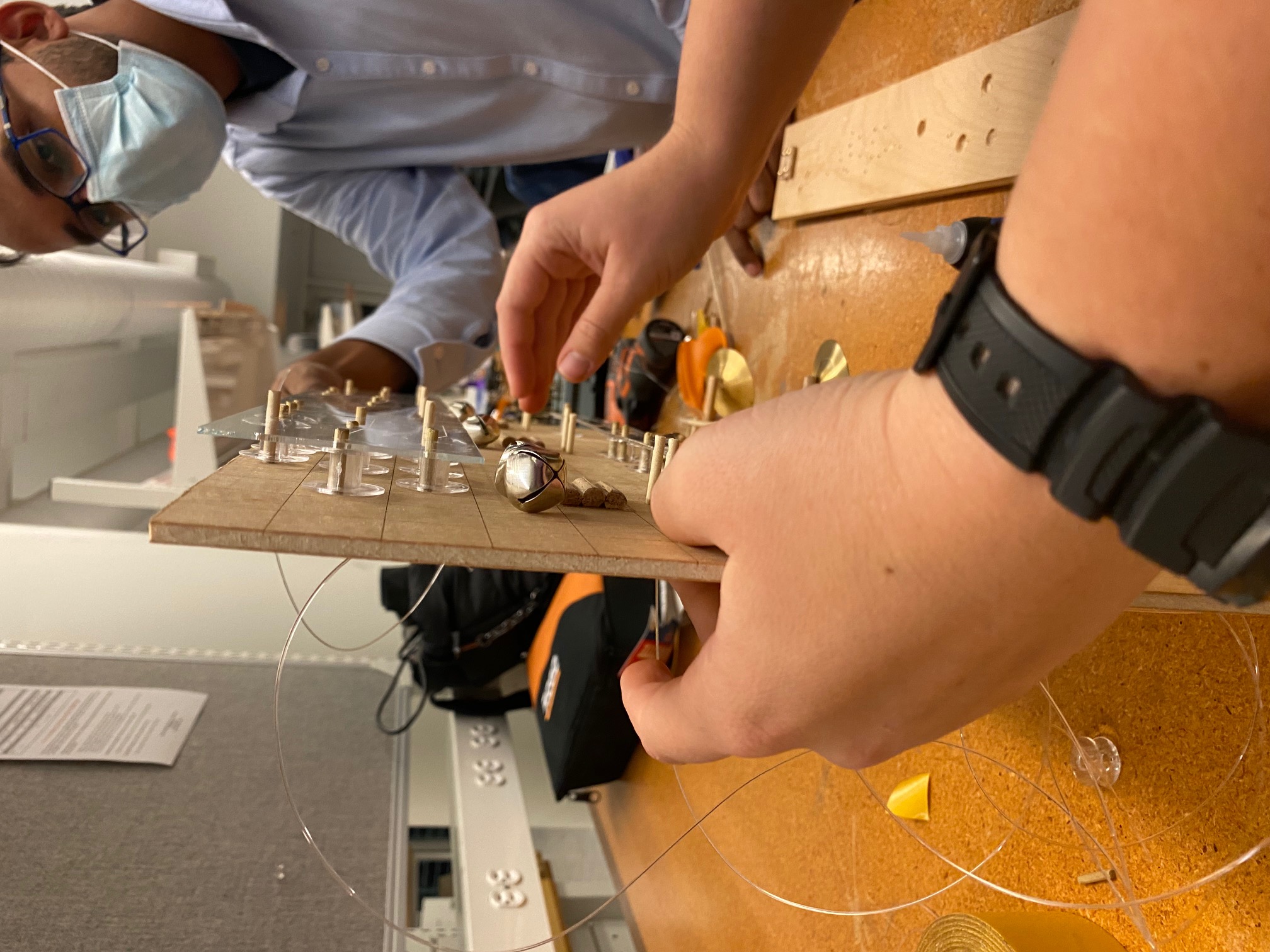Tectonic Computation-Mechanical Computing Device

Information can be encoded into different objects and transferred over distance. People used to transfer information utilizing bells. Historically, they have been associated with religious rites, and are still used to call communities together for religious services. Many public or institutional buildings still house bells. Most commonly bells can be found in clock towers to chime the hours. With this inspiration we started our Musical Device Project, which at the end would also work as a physical computing device.
Introduction
Today, with the dominance of digital information and communications technologies (ICTs), information is mostly perceived as digital bits of electric pulses, while the Internet is seen as a gigantic network of cables, rout- ers, and data centers that interconnects cities and con- tinents. But few know that for a brief period in history, before electricity was utilized and information theory for- malized, a mechanical version of what we call “Internet” connected cities across rural areas and landscapes in Europe, the United States, and Australia, communicating information by transforming a rather peculiar medium: geometric architectural form.
The problem
Telecommunication was not a novelty in the eighteenth century. Early data networks communicated intelligence across land and sea through such media as fire, sound, light, pigeons, mirrors, and flags. In the twelfth cen- tury BCE, for example, Agamemnon used a bonfire relay line across six hundred kilometers of ocean and terrain to communicate the news of Troy’s fall to Mycenae. In 150 BCE, Greek historian Polybius described a system of sending pre-encoded messages with torches combina- tions.And in 1453, Nicolo Barbaro mentioned in his diary how Constantinople’s bell-tower network alerted citizens in real time to the tragic progress of the siege by the Ottomans.It wasn’t until the mid-eighteenth century, however, that telecommunications developed into vast territorial networks that used visual languages and control protocols to disassemble any message into discrete signs, route them wirelessly through relay sta- tions, reassemble them at the destination, and refor- mulate the message by mapping them into words and phrases through lookup tables. And all of this was done in unprecedented speeds.
Information Encoding




Precedents
Images below show the references of ancient use of bells



Contemporary use and Mathematics behind use of Bells and Music
The oldest bells in North America are from 1745, found at The Old North Church in Boston. To this day, the Boston towers ring for special events such as weddings and holidays. It is one of many methods for sending information to people. Ringers follow methods which describe the path of each bell in a composition. The basic rules are:
A. Each composition begins and ends in rounds.
B. Each bell sounds exactly once in each tone row or change.
C. A bell can move only one position at a time.
D. No change is repeated within a method.
E. The simplest method is called Plain Bob. The above picture is Plain Bob Minimus, which plays on four bells.
In order to learn a method, a ringer learns the blue line that outlines the path of the bell.
Ringers rely on the symmetry of the pattern to memorize it; they have no music in front of them when they ring.
With the exception of the treble, each bell follows the same path, albeit beginning in a different place.
The treble “hunts”, that is, traverses a path from front to back and front again four times.



Creating Proof of Conecpt
Goals for Proof of Conecpt
Information can be encoded into different objects and transferred over distance. People used to transfer information utilizing bells. Historically, they have been associated with religious rites, and are still used to call communities together for religious services. Many public or institutional buildings still house bells. Most commonly bells can be found in clock towers to chime the hours. With this inspiration we started our Musical Device Project, which at the end would also work as a physical computing device.
Gates concatenation
First Step was to see if we could use the Mathematical logic gates to concatenate and produce output. 2nd Step was to design the Musical Device. We developed the prototype of the musical instrument, which involves strings and bells, which produces sounds and computes based on the user's input. It involves various logic gates which concatenate to produce different sounds or music depending on the different logic gates. For example, this device will produce certain sound when OR-gate operates and different sound when AND gate operates. And when they concatenate and produce sound it also indicates that it is doing a mathematical calculation.
Working Prototype of proof of Concept
Upload the video on youtube

Working Prototype.









Upload the videos on youtube